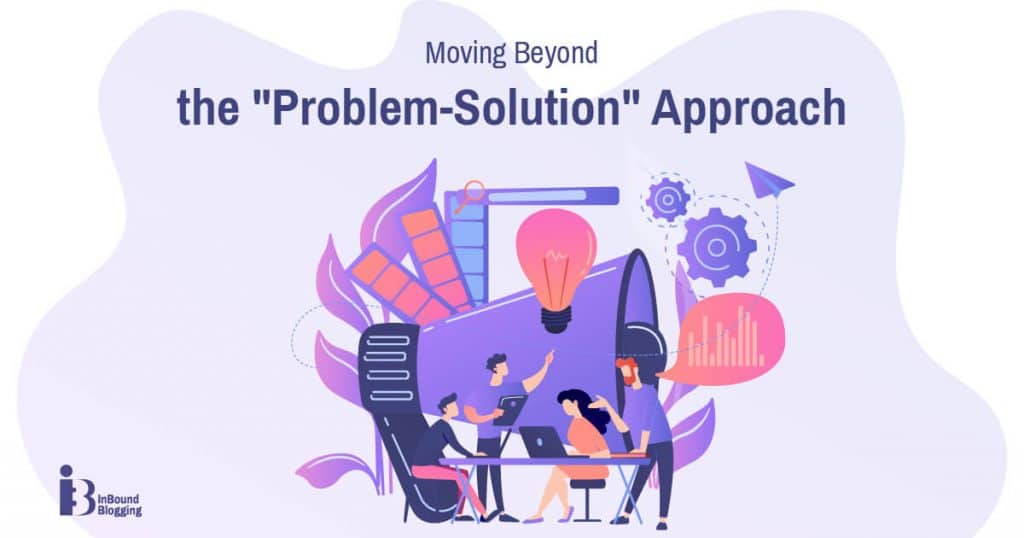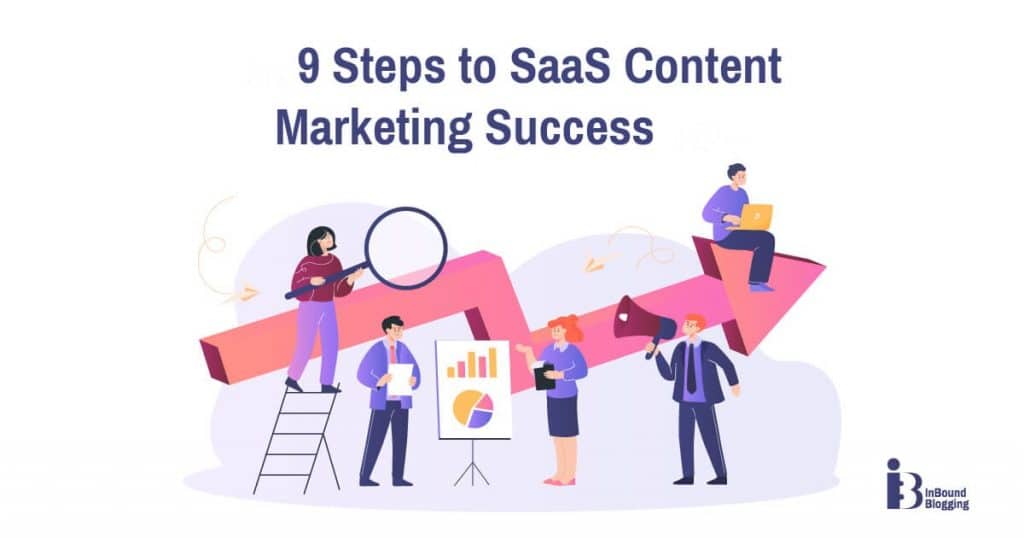Navigating the world of SaaS content marketing can feel like a maze with no clear exit. With so many SaaS companies sporting advanced SEO strategies, it’s high time to level up your game.
This article is your roadmap to mastering content for SaaS brands by offering tried-and-true strategies and insights.
Trust us, you don’t want to miss out!
Content Marketing for SaaS Companies (Key Takeaways)
- SaaS businesses can use content marketing as a powerful strategy for attracting, educating, and converting prospects into customers. It requires a clear understanding of the target audience, their pain points, and their goals.
- Content marketing can help SaaS brands showcase their expertise, build trust, and differentiate themselves from competitors.
- Careful content planning, creation, and distribution are a must. Your content marketing plan must align with the buyer’s journey and your SaaS value proposition.
- Overall content marketing for SaaS companies can be measured and optimized using metrics such as traffic, engagement, leads, conversions, retention, and revenue.
What Makes SaaS Content Marketing Unique?
Content marketing in the SaaS sphere embodies a unique approach, setting it apart from other industries. In contrast to tangible physical products, SaaS offerings are intangible digital services that often require more elaborate explanations and storyboard narratives.
The customer journey within this industry tends to be more complex as well due to the B2B nature of many transactions, demanding an extra layer of precision and strategy in content creation.
Further defining its uniqueness is the heavy reliance on recurring subscriptions. This model necessitates continuous user engagement and persuasion, making retention-focused content just as important as acquisition-centric material.
To effectively navigate these nuances of SaaS content marketing, businesses must cultivate strategies built on deep audience research and understanding their unique selling proposition (USP).
The Importance of Content Marketing in the SaaS Industry

In the competitive and ever-evolving landscape of the SaaS industry, content marketing’s role is vital. It acts as a powerful SaaS SEO tool to communicate your brand’s unique selling proposition (USP), educate potential customers about your services, and ultimately drive them toward conversion.
An impressive 70% of SaaS companies boast well-developed or advanced content marketing strategies—a testament to their integral function in this sector.
Content marketing does more than just sell—it establishes authority and trust within your audience. More so in B2B transactions where multiple decision-makers come into play.
By creating customer-focused content that reflects pertinent industry knowledge—which is crucial for building credibility—you enable stronger connections with prospects while positioning yourself as an expert in the field.
The interconnection between various teams also plays a significant part in successful content marketing for SaaS businesses. Collaborating closely with the Sales and Customer Support departments allows you to tap deeper into customer needs and pain points—an invaluable insight when crafting impactful narratives around your product features or updates.
The key lies in understanding how your software solves specific problems for users and then presenting this solution effectively through strategic storytelling.
Building a Robust SaaS Content Marketing Strategy
By building a strong and effective SaaS content marketing strategy, business owners can drive growth, engage their target audience, and establish their brand as a thought leader in the industry.
Let’s go over the most important steps and tools needed for SaaS success:
Understanding your product and brand
Grasping the intrinsic value of your B2C or B2B SaaS product is a pivotal step in constructing an effective content marketing strategy. As a business owner, thorough knowledge about your product’s features, its unique selling proposition (USP), and your brand’s overarching narrative will empower you to craft meaningful content that resonates with your target audience.
Confidence in discussing the intricacies of your SaaS services not only bolsters credibility but also positions your brand as an authority within the industry.
In essence, comprehending what sets you apart in a highly competitive SaaS sector equips you for success when you want to develop a high-performing SaaS content strategy.
Want to stand out in the crowded SaaS market? Check out my article on SaaS product marketing and gain valuable tips on differentiating your product.
Defining your content marketing goals
Defining your content marketing goals is crucial for the success of your SaaS business. Having clear objectives helps you stay focused and measure the effectiveness of your content strategy.
According to the State of Content Marketing Global Report, brand awareness, website traffic, and lead generation are the top three goals for IT/SaaS companies. By setting specific targets in these areas, such as increasing organic website traffic by X% or generating X number of marketing qualified leads (MQLs) per month, you can align your content efforts with tangible outcomes.
Remember that investing in inbound marketing yields results. So take the time to define your goals and watch how they drive growth for your business.
In-depth audience research
Understanding your target audience is an essential part of your SaaS content marketing strategy. In-depth audience research allows you to gain valuable insights into their needs, preferences, and pain points.
By conducting thorough research, you can create great content that engages your audience and provides them with the information they’re looking for.
Investing in audience research gives you a better understanding of their interests and behavior patterns. This knowledge will help you tailor your marketing content to address their specific pain points and provide solutions.
Additionally, collaborating with other teams within your company, such as Sales and Customer Support, is crucial for gathering insights about your target audience. They interact directly with customers on a daily basis and can provide valuable feedback regarding customer needs and challenges.
Incorporating this information into your content piece will make it more relevant as well as demonstrate that you truly understand your customers’ unique requirements.
“For us, our target audience is developers. As developers, we asked ourselves what would interest us, our preferred type of content, and where we’d find it. We created a strategy that delivered the right content, in the right format, through the right channels. We loaded our content with technical details aimed at developers, skipping the usual marketing fluff. By targeting our end users directly, we secured our first 1000 users.” — Boris Markovich, Co-Founder, Ayrshare
Content Mapping
Develop a content calendar that outlines which topics will be covered and when. This helps ensure a consistent flow of content and allows you to strategically plan the release of each piece. Consider factors like seasonality, industry events, or product launches when mapping out your content schedule.
Knowledge of your industry
Having a deep knowledge of your industry is critical for creating working content marketing strategies in the SaaS sector. As a business owner, it’s important to understand not only the features and functionalities of your own product but also how it fits within the broader industry landscape.
By staying informed on the latest trends, developments, and challenges in your industry, you can identify opportunities for valuable content creation. Whether it’s addressing common issues or showcasing innovative use cases, leveraging your knowledge helps you create SaaS content that speaks directly to the needs of potential customers.
Furthermore, understanding your product inside out enables you to effectively communicate its unique value proposition (USP) through your content. By highlighting what sets your solution apart from competitors, you can acquire the status of an expert in solving specific problems within the SaaS market.
Moving Beyond the “Problem-Solution” Approach

In this section, we will explore how to move beyond the traditional “problem-solution” approach in SaaS content marketing, guiding your audience with valuable and engaging content that establishes thought leadership and dives deep into relevant topics.
Guiding the audience with content
One of the keys to successful SaaS content marketing is guiding your audience with insightful content. Instead of simply presenting a problem and offering a solution, take your audience on a journey by offering them educational resources, industry insights, and practical tips.
This approach not only helps attract more visitors to your website but also keeps them engaged throughout their buying journey. So instead of just solving problems for your audience, guide them toward making informed decisions by providing them with high-quality content that empowers and educates them.
Establishing thought leadership
By exploring complex concepts and offering in-depth analysis of industry trends, you position yourself as a trusted thought leader. Thought leadership plays a vital role in establishing your SaaS brand as an industry expert and building trust with your audience. Share valuable insights, expertise, and unique perspectives to become a go-to resource that business owners turn to for guidance.
Creating thought leadership content such as podcasts, expert articles, or collaborations with influencers allows you to showcase your knowledge and build credibility within your niche. This helps you improve brand awareness and create a community of engaged followers who see you as the authority in the field.
“For SaaS marketing, blogs, newsletters, webinars, and podcasts are the best-performing content formats. Get into the shoes of your ICP and create content around things that concern them. For instance, if you sell a high-ticket sales-enablement tool, your content must resonate with VPs of Sales. And they might be more interested in a blog about building and managing a sales team rather than a blog about sales tactics.” — Pushkar Sinha, Digital Marketing Manager & Lead-SEO Research, First Principle Growth
Diving deep into content topics
To truly captivate and engage your target audience, it’s pivotal to write content on topics that are intriguing to them. Building topical authority is key in SaaS content marketing. Instead of using unrelated keywords or creating shallow content, focus on selecting core topics and diving deep into them.
By understanding the subtopics and related keywords within your niche, you provide comprehensive information to your audience and prove your expertise in the subject matter. This builds trust among potential customers and positions your brand as an expert guide and solution provider.
Take advantage of your expertise in the industry by delving into nuanced discussions that bring unique value to your customers.
Creating an Effective Content Marketing Funnel
Designing lead-nurturing content workflows that prioritize quality over quantity results in higher engagement and conversions.
Below, you’ll discover how to optimize your content marketing funnel for maximum impact.
Designing lead-nurturing content workflows
Lead-nurturing content workflows are crucial for B2C and B2B SaaS companies looking to convert leads into paying customers. Here’s how to design effective workflows:
- Understand your audience: Research and segment your audience based on their needs, pain points, and SaaS buyer personas.
- Create quality content: Publish educational content on your website. Make sure you address your audience’s challenges and provide solutions. SaaS content marketing examples include blog posts, whitepapers, case studies, and video tutorials.
- Use a marketing automation platform: Utilize tools like HubSpot or Marketo to automate your lead nurturing process. These platforms allow you to create personalized email campaigns triggered by specific user actions or behaviors.
- Implement progressive profiling: Gradually collect more information about your leads over time by using dynamic forms that adapt based on previous data entered. This helps tailor future content offerings to their needs.
- Score and prioritize leads: Assign scores to leads based on their engagement level with your content and their fit as potential customers. Identify high-scoring leads that are most likely to convert.
- Send relevant content at the right time: Trigger email workflows based on lead behavior and interests. For example, if a lead downloads an e-book about a specific topic, follow up with related content, such as a webinar or case study.
- Personalize the customer journey: Use personalization tokens in emails to address leads by name and provide targeted recommendations based on their previous interactions with your brand.
- Monitor analytics and optimize: Track the performance of each workflow using metrics like open rates, click-through rates, conversion rates, and revenue generated. Adjust your workflows based on data-driven insights to continually improve results.
Quality over quantity in content creation
Creating high-quality content is paramount in SaaS content marketing. Rather than churning out a large volume of mediocre content, it’s important to focus on delivering valuable and insightful pieces.
According to a recent study, 97% of SaaS companies are finding some degree of success in their content marketing efforts. This means that quality content has a greater impact on driving results compared to simply producing a large number of articles or blog posts.
By investing time and effort into crafting well-researched, informative, and engaging content, you can establish your brand as a thought leader in the industry and build trust with your audience.
Promotion and Distribution Strategies for SaaS Content
Here, you’ll learn effective strategies and examples of how to promote and distribute your SaaS content to reach a wider audience and maximize its impact. The key tactics for a successful content distribution strategy in the SaaS industry include leveraging social media platforms, guest blogging opportunities, email marketing campaigns, and more.
So let’s dive right in!
Examples of effective content distribution
- Use social media platforms, such as LinkedIn, Facebook, and Twitter, to share your SaaS content with a wide audience.
- Collaborate with industry influencers and thought leaders to amplify the reach of your content through guest blog posts, interviews, or co-created content.
- Utilize email marketing campaigns to engage with your existing customer base and nurture leads with valuable content.
- Share your SaaS content in relevant online communities and forums where your target audience is active, allowing you to establish brand authority and reach potential customers.
- Repurpose your content into different formats, such as infographics, videos, or podcasts, to cater to various preferences and platforms.
- Explore partnerships with other complementary SaaS companies or brands to cross-promote each other’s content and expand your reach.
- Consider advertising on digital platforms like Google Ads or social media to target specific audiences with your content.
- Optimize your website for search engines by implementing SEO best practices, such as keyword optimization, meta tags, and internal linking to increase organic visibility and drive traffic to your SaaS content.
“When it comes to reaching the SaaS crowd, it’s kinda like making a mixtape—you’ve got to know what tunes they’re into. First off, nobody’s got time for fluff. So, diving deep into what keeps them up at night? That’s the ticket. Think real problems, real solutions, and how a SaaS tool can be the hero.
Now, getting the word out is its own beast. I swear by LinkedIn. It’s like the coffee shop where all the SaaS folks hang out. Drop the right content there, and it’s like free refills on engagement. And don’t even get me started on webinars and online workshops; they’re like live gigs for the brand, connecting with the audience in real time.” — Sudhir Khatwani, Founder, The Money Mongers
The 9 Steps to SaaS Content Marketing Success in 2024

In 2024, achieving success in SaaS content marketing requires the following nine key steps:
1. Defining your target audience
By clearly identifying who your ideal customers are, you can tailor your content to meet their specific needs and preferences. When you target the right audience, you have a better chance of converting them into customers. Studying customer demographics, behaviors, challenges, and motivations helps you create targeted content that drives better results for your business.
2. Identifying customer pain points
By understanding the challenges and frustrations that your target audience faces, you can create SaaS content that resonates with them and provides valuable solutions.
This involves conducting thorough audience research to gain insights into their needs and desires. According to market data, 65% of SaaS and IT businesses invest over $3,000 monthly on content marketing precisely because they recognize the importance of understanding customer pain points. By empathizing with their struggles, you can establish a strong connection with your audience while positioning your brand as a trusted resource in the industry. That is a classic recipe for improved marketing ROI.
3. Researching keywords
Keywords play a major role in SaaS content marketing, helping you reach your target audience and drive organic traffic to your website. By identifying the right keywords, you can optimize your content for search engines and improve your visibility online.
This involves conducting thorough keyword research using tools like Google Keyword Planner, Ahrefs, or SEMrush to identify relevant terms that are frequently searched by your target customers.
By strategically incorporating keywords with high search volume into your content you can increase the likelihood of attracting high-quality leads, who are actively searching for solutions related to your SaaS product or service.
Moreover, you must also include keywords with high business potential—these are terms and phrases relevant to your SaaS business that not only draw leads to your website but also convert them into paying customers.
In fact, studies show that 51% of all website traffic comes from organic search, highlighting the importance of a well-executed keyword strategy in driving traffic and generating conversions for SaaS businesses.
4. Understanding and analyzing search intent
Search intent, also often referred to as “user intent,” represents the goal a user has in mind when they type a query into a search engine. In other words, it’s the reason they’re searching in the first place.
Understanding search intent is critical for your SaaS SEO efforts because Google’s algorithm is designed to understand and meet user intent. So, the better you understand your audience’s search intent, the better you can shape your content to meet their needs.
Search intent typically falls into four categories:
- Informational intent:
Users are looking for more information about a certain topic, product, or industry. Queries might include words like “how”, “why”, “when”, or “what” and are usually open-ended, allowing for a wide range of potential content to satisfy the intent. - Navigational intent:
Users know exactly where they want to go—the URL or the brand—they’re just using Google to get there. These searches will include specific brand or website names. - Transactional intent:
Users are looking to make a purchase or complete a specific action, such as signing up for a subscription. These searches will likely include words like “buy”, “order”, or “purchase” as well as brand or product names. - Commercial intent:
Users are planning to buy in the near future and are researching to make the best decision. These search queries often include comparisons, reviews, or specific features of products or services.
Analyzing and understanding search intent determines what kind of content to create and which keywords to target. That would result in a long-term improvement in search engine rankings.
5. Creating an outline for articles
When starting a new content piece, it’s essential to have a well-structured outline that serves as a roadmap for your writing. One effective way to create a SaaS outline is by analyzing top-performing articles on the chosen topic. By studying articles that have resonated with your target audience, you can identify common themes, key points, and the overall structure that has led to their success.
Now, let’s see where to place your attention:
- Researching Top-performing Articles
Start by researching articles on the topic through thorough keyword analysis and competitive research. Look for SaaS articles that have high engagement, such as a high number of social shares, comments, or backlinks. These metrics indicate that the article has captured the interest and attention of readers.
- Analyzing Article Length
Pay attention to the length of the top-performing articles. Are they long and comprehensive or shorter and more concise? This will give you an idea of the preferred length for your target audience. While analyzing the top-performing articles, find out the common themes and key points covered. What are the main customer pain points that have been addressed? Then, iidentify any gaps or missed opportunities that you can address in your own piece.
- Identifying Common Themes and Key Points
While analyzing the top-performing articles, find out the common themes and key points covered. What are the main customer pain points that have been addressed? Then, identify any gaps or missed opportunities that you can address in your own piece. Identify the common themes and key points covered in the top-performing articles. What are the main customer pain points that have been addressed?
- Adding a Unique Angle
To make your content stand out from the crowd, it’s crucial to add a unique angle to the topic. Consider using personal anecdotes, case studies, or expert interviews to provide a fresh perspective. Highlight unique insights or research findings that haven’t been widely covered. Remember, adding a unique angle doesn’t mean completely deviating from the topic. It’s about offering a different point of view, thus setting your content apart from the competition.
- Presenting Content Creatively
Focus on presenting the information in a creative and engaging way. Use storytelling techniques, visuals, or interactive elements to make your content more memorable and shareable. By compellingly delivering your message, you increase the chances of catching and retaining your readers’ attention.
6. Setting campaign goals and metrics
By defining what you want to achieve with your content, such as increasing brand awareness or generating leads, you can create targeted strategies that align with these objectives.
Additionally, establishing specific metrics allows you to measure the effectiveness of your campaigns and make data-driven decisions. By setting campaign goals and metrics, you can ensure that your content efforts are focused and impactful in driving desired outcomes for your business.
“Amid the fiercely competitive SaaS landscape, it’s easy to get lost in a sea of numbers. Yet, we’ve learned that focusing on the right metrics is the real driving force. By tailoring content to our audience’s unique needs and prioritizing valuable lead generation, we’ve struck a balance between visibility and conversion. This approach has not only boosted our SaaS company’s growth but also fostered meaningful connections with our customers, grounded in trust, understanding, and value.” — Laura Roeder, Founder, Paperbell Coaching Software
7. Establishing content production procedures
To ensure a smooth and efficient content creation process for your SaaS business, it’s essential to establish clear content production procedures. Here’s how you can do it:
- Define roles and responsibilities: Clearly outline the roles and responsibilities of each team member involved in content creation, such as writers, editors, designers, and SEO specialists. This ensures accountability and avoids confusion.
- Create a content calendar: Develop a content calendar that includes deadlines for each piece of content. This helps you stay organized and ensures that you create and publish content on time.
- Conduct regular brainstorming sessions: Schedule brainstorming sessions with your team to generate new content ideas. Encourage everyone to contribute their suggestions and discuss potential topics that align with your target audience’s interests and pain points.
- Develop an editorial style guide: Create an editorial style guide that outlines the preferred tone of voice, formatting guidelines, grammar rules, and any other specific requirements for your brand’s content. This maintains consistency across all your written materials.
- Establish a review process: Implement a review process where every piece of content goes through multiple rounds of feedback and revisions before publication. This ensures high-quality output that meets your brand standards.
- Optimize for SEO: Train your content creators on how to optimize their SEO content writing. Provide them with relevant keywords to incorporate naturally into their work and encourage proper meta-tagging practices.
- Utilize project management tools: Invest in project management tools like Trello or Asana to streamline communication, track progress, assign tasks, and monitor deadlines throughout the content production process.
- Foster collaboration between teams: Encourage collaboration between different departments within your organization, such as Sales, Customer Support, Product Development, and Marketing teams. Their input can help shape valuable content that attracts and engages your target audience effectively.
8. Developing a distribution strategy
Your SaaS content marketing efforts will be more successful if you outline a robust distribution plan. Here are key steps to consider:
- Utilize social media platforms: Share your content and interact with your audience on popular social media platforms, such as LinkedIn, Twitter, and Facebook.
- Engage in industry forums and communities: Join relevant online communities, forums, and groups relevant to your target audience. Participate in discussions, answer questions, and share valuable insights that can drive traffic back to your website.
- Publish guest posts on industry blogs: Reach out to authoritative industry blogs and offer to contribute guest posts showcasing your expertise. This helps you tap into their existing audience as well as position you as a thought leader within the industry.
- Send out email newsletters: Build an email list of interested prospects and customers, then regularly send out newsletters featuring your latest content. You can use email marketing tools to automate the process. Sharing exclusive content through email not only keeps subscribers engaged but also helps drive traffic back to your site.
- Collaborate with influencers: Identify influencers or experts within your niche, who have a significant following or authority. Collaborate with them by featuring their insights in your content or inviting them to participate in webinars or podcasts hosted by your brand.
- Paid advertising campaigns: Invest in paid advertising campaigns, such as pay-per-click (PPC) ads on search engines or sponsored posts on social media platforms like Facebook Ads or LinkedIn Ads. This can help you increase your visibility and reach potential clients quickly.
- Repurpose content across different formats: Don’t limit yourself to just one type of content format; explore different mediums, such as video content, infographics, podcasts, ebooks, and webinars. You can also repurpose your blog articles by writing several impactful social media posts based on them. This way, one article generates ideas for multiple posts across different social media platforms. A longer video, for example, can be turned into a story or infographic.
“One proven approach for creating and sharing content that speaks to a SaaS audience is repurposing. I like to reshape my content into different formats that resonate with today’s users—think LinkedIn carousels, Twitter threads, Instagram reels, YouTube videos, or Facebook group posts.
Rather than directly linking the content, I focus on amplifying native impressions on each platform and incorporate my company’s name into the repurposed content.
The real magic happens when I measure success in terms of impressions gained on the platforms. These impressions add up, trust me! People naturally end up looking up your brand, leading to eventual consumers—even if there’s no direct attribution.” — Madhav, Founder, Early Stage Marketing
9. Monitoring results and making adjustments
By regularly analyzing data and making necessary adjustments, you can optimize your strategy to achieve better results. Here are the main steps to help you effectively monitor and adjust your content marketing efforts:
- Track key metrics: Use tools like Google Analytics or other SEO software to track important metrics, such as website traffic, conversion rates, and lead generation. This data will provide insights into the performance of your content.
- Analyze audience engagement: Monitor metrics like time spent on a page, bounce rate, and social shares to gauge how engaged your audience is with your content. Look for patterns and trends that can guide you in creating more impactful content.
- Evaluate keyword performance: Assess the performance of the keywords you’re targeting in search rankings and organic traffic. Identify opportunities to optimize your keyword strategy based on what’s working well and what needs improvement.
- Measure conversion rates: Determine how effective your content is at converting leads into customers by tracking metrics like marketing qualified leads (MQLs) and conversion rates at each stage of the sales funnel. Adjust your content approach accordingly.
- Keep an eye on competitor activities: Monitor your competitors’ content marketing tactics through market research or competitor analysis tools. This will help you stay ahead by identifying areas where you can differentiate yourself.
- Seek customer feedback: Regularly gather feedback from customers through surveys or interviews to understand their perspectives on your content and how it influenced their decision-making process.
- Test different approaches: A/B tests different elements of your content, such as headlines, call-to-actions, or visuals, to determine what resonates best with your target audience.
- Stay updated on industry trends: Continually research industry trends, emerging technologies, or changes in customer behavior that may impact your SaaS content strategy. Stay flexible and adapt as needed.
- Collaborate with cross-functional teams: Engage with your Sales and Customer Support teams to gather insights on customer pain points or frequently asked questions. Use this information to shape your content and address customer needs more effectively.
- Regularly review and optimize: Set aside time to review your content marketing strategy on a regular basis. Make data-driven decisions based on the insights you’ve gathered, and adjust your approach as necessary to maximize results.
“I think more than just nailing your strategy, it’s equally important to figure out the precise and personalized tactics you’ll need to put it into action. For example, the tactics for marketing a SaaS product aimed at marketing and sales professionals won’t be the same as tactics for a SaaS product aimed at musicians or gamers.
Of course, all this planning won’t count for much if you’re not keeping tabs on whether things are actually working. This is another important consideration when selecting digital marketing tools: ensure they offer relevant measurements and that you or your team can make sense of the data and use it to make informed decisions.
It’s not just about having the tools; it’s about understanding what they’re telling you and steering your ship accordingly.” — Ewen Finser, Founder, The Digital Merchant
SaaS Content Marketing Tips and Tactics
When overhauling your blog, focus on developing a conversion keyword strategy and creating content that addresses the problem rather than providing a solution.
Overhauling your blog
Your blog doesn’t generate the desired results for your SaaS business? It may be time to overhaul your blog and implement new strategies to boost its effectiveness. Start by following these steps:
- Update your design: Give your blog a fresh look and feel by updating its design. Use a modern, responsive theme that is visually appealing and optimized for mobile devices.
- Conduct keyword research: Find relevant keywords that have a high search volume, high business potential, and low competition. Use tools like the Keyword Magic Tool to identify the most effective keywords to target.
- Optimize for SEO: Ensure that each blog post is properly optimized for search engines by including relevant keywords in headings, meta tags, image alt tags, and within the body of the content itself. This will help improve organic visibility.
- Improve your headline writing: Craft compelling headlines that grab attention and entice readers to click through and read more. Make your headlines stand out by using strong action words, numbers, and emotional triggers.
- Enhance readability: Make sure your blog posts are easy to read by using subheadings, bullet points, and short paragraphs. Break up long blocks of text with visuals, such as images, infographics, or videos.
- Focus on quality of content over quantity: Prioritize creating high-quality articles that provide real value to your audience. Invest time in thorough research and create in-depth, comprehensive pieces.
- Incorporate multimedia elements: Make your blog more engaging by incorporating multimedia elements, such as images, videos, podcasts, or interactive graphics. This will help capture and retain the reader’s attention.
- Implement a lead generation strategy: Use your blog as a lead generation tool by incorporating lead capture forms, opt-in boxes, or call-to-action buttons within your posts. Obtain contact information by offering valuable resources or freebies.
- Analyze and optimize: Take a closer look at the types of content you are producing and analyze their performance. This helps you find the strengths and weaknesses of your strategy and, therefore, take action to improve it. Make use of tools like Google Analytics to monitor the performance of your blog on a regular basis. Keep track of metrics such as traffic, bounce rate, time on page, and conversion rate.
Utilizing unique data
By leveraging data that is exclusive to your business or industry, you provide valuable insights that competitors cannot match. This not only helps you attract and engage your target audience but also positions your brand as a trusted source of expertise.
So, how can you utilize unique data in your SaaS content marketing? Start by tapping into the wealth of customer information at your disposal. Analyze usage patterns, customer behavior, and feedback to identify trends and pain points. Use this data to create compelling case studies or infographics that showcase the effectiveness of your product or service.
Additionally, consider conducting surveys or running experiments to gather new insights specific to your niche. These findings can be turned into thought-provoking blog posts or whitepapers that offer actionable advice backed by real-world data.
“Utilizing data-driven segmentation, SaaS companies create hyper-relevant content, from personalized case studies to interactive ROI calculators. This approach enhances engagement by delivering content that directly addresses individual challenges, fostering a stronger connection.” —Vikas Kaushik, CEO, TechAhead
Developing a conversion keyword strategy
To drive effective results, identifying and targeting the right keywords is a must. Developing a proper keyword strategy is the foundation of great SaaS content marketing to attract qualified leads and increase conversions.
When selecting keywords, it’s important to consider factors like search volume, user intent, business potential, competition, and relevance to your target audience. Additionally, incorporating long-tail keywords is beneficial as they often indicate high intent, meaning that searchers are more likely to convert into customers.
By conducting thorough keyword research and analysis, businesses ensure that their content aligns with what potential customers are searching for, ultimately maximizing their chances of success in the competitive SaaS industry.
Creating for a problem, not for a solution
When it comes to SaaS content marketing, creating content that focuses on the problem rather than just the solution is key. Instead of simply promoting your product or service, you should understand the challenges facing your target audience and provide advice to help them overcome these obstacles.
By addressing their specific problems through your content, you can establish yourself as a trusted expert. Continuously providing relevant and helpful information not only helps attract potential customers, who are actively seeking solutions but also enables you to improve relationships with existing customers.
Writing for each stage of the funnel
To create an effective SaaS content marketing strategy, it’s essential to tailor your writing for each stage of the funnel.
In the Awareness stage, focus on providing educational and informative content that addresses common pain points faced by your target audience. Show them that you understand their challenges and offer valuable insights.
As prospects move into the Interest stage, shift your content writing toward showcasing thought leadership and demonstrating how your SaaS solution can solve their problems.
In the Consideration stage, delve deeper into content topics with case studies, pricing comparisons, and feature explanations to help potential customers evaluate their options.
Finally, in the Conversion stage, craft persuasive copy that highlights the benefits of choosing your SaaS product and provides clear calls-to-action to encourage sign-ups or purchases.
By tailoring your writing to each stage of the funnel, you can effectively guide potential customers through their buying journey and increase conversion rates.
Why Choose InBound Blogging for a SaaS Content Writing Service?
In the competitive SaaS industry, crafting highly relevant and impactful content can set your brand apart. At InBound Blogging, we understand the pivotal role quality content plays in driving growth and establishing authority.
When you partner with us, you’re engaging a team with a deep understanding of the SaaS market’s unique requirements, tactical complexities, and audience engagement strategies.
Here are the reasons why our services can serve as a key component in your SaaS content marketing strategy:
✅ Expertise in the SaaS Market
Our professional content writers are experienced in the SaaS industry. They understand the intricacies of SaaS products and services, and can skillfully communicate your brand’s unique value proposition to the target audience.
✅ Custom Content Strategies
Every SaaS business is unique, so your content marketing strategy must be unique as well. We don’t believe in a one-size-fits-all approach. Instead, we work hand-in-hand with you to construct a content strategy tailored to your specific business goals and targeted audience needs.
✅ Quality-Driven Content
At InBound Blogging, quality is at the heart of our content creation process. Our writers are adept at delivering well-researched, insightful, and engaging content.
Take your business to the next level with our SaaS content marketing service!
Conclusion: Achieving Success in SaaS Content Marketing
Mastering SaaS content marketing is fundamental for SaaS businesses looking to thrive in the digital landscape. Develop a robust content strategy that drives significant growth by focusing on audience research, thought leadership, and effective content promotion.
With the right content marketing tools and expertise, success is within reach for any business willing to invest the time and effort. Stay ahead of the competition by implementing these strategies, and watch your brand soar to new heights.
FAQ
What is SaaS content marketing?
SaaS content marketing refers to the use of relevant and valuable content to attract, engage, and convert potential customers for Software as a Service (SaaS) companies. That includes creating a mix of content involving informative blog posts, whitepapers, ebooks, videos, and other forms of content that highlight the benefits and features of a SaaS product.
What makes SaaS content marketing different from other industries?
SaaS content marketing differs from other industries due to its complex and technical nature, requiring specific language and clear communication. SaaS products are high-value purchases, requiring a longer sales cycle than other industries. The focus is on building relationships over time rather than quick conversions.
How can SaaS content marketing benefit my business?
Implementing a strong SaaS content marketing strategy can help your business build brand awareness, establish credibility in the industry, generate leads, nurture customer relationships, increase conversions, and ultimately drive revenue growth. By providing valuable information to your target audience through a range of content formats, you can position your company as an authority within the SaaS space. This approach eventually leads to better marketing ROI.
What are some effective strategies for successful SaaS content marketing?
Some effective strategies for successful SaaS content marketing include:
– Conducting thorough audience research to understand their pain points and needs.
– Creating high-quality educational or informational content that addresses those pain points.
– Leveraging SEO techniques to optimize your website’s visibility in search engine results pages.
– Utilizing social media platforms for content promotion.
– Incorporating lead generation tactics like gated assets or email sign-ups.
– Regularly analyzing data metrics to refine your strategy based on performance.
How important is consistency in SaaS content marketing?
Consistency is crucial in SaaS content marketing because it helps establish trust with your audience and reinforces brand recognition.
Consistent publishing schedules ensure that your target audience knows when they can expect valuable new information from you. It also demonstrates professionalism and reliability, which are essential factors for building long-term relationships with potential customers.
Regularly sharing quality content on various marketing channels helps maintain engagement levels while keeping your brand top of mind among prospects.
How much should I budget for SaaS content marketing?
The budget for SaaS content marketing varies depending on the company’s goals, the size of the content team, and the complexity of the product. However, a general guideline is to allocate 10-20% of the company’s revenue toward marketing. This budget should be used to publish high-quality content, distribute it through various channels, and track and analyze the results.
Do I need a dedicated team for SaaS content marketing?
For SaaS content marketing, it is recommended to have a dedicated team, since it requires deep product knowledge and clear communication of technical concepts. A dedicated team can ensure that content is created consistently, distributed effectively, and analyzed regularly to optimize performance. Relying on trustworthy marketing agencies such as InBound Blogging is the best choice for you.
When does SaaS content marketing yield results?
It can take several months to see results from SaaS content marketing, as it often involves building relationships with potential customers over time. However, the timeline varies depending on the specific goals and strategies used. For example, if the goal is to generate leads, it may take several months to see a significant increase in leads. However, if the goal is to increase website traffic, results may be seen more quickly.
What are some effective distribution strategies for SaaS content?
Some effective distribution strategies for SaaS content include social media marketing, email marketing, guest posting on industry blogs, and influencer marketing. Social media marketing can be used to promote content to a large audience, while email marketing is suitable for nurturing leads and building relationships with customers. Guest posting on industry blogs helps to build credibility and increase exposure, while influencer marketing is a great way to reach new audiences and build brand awareness.
Should I focus on organic traffic or paid advertising for SaaS content marketing?
Both organic traffic and paid advertising can be effective for SaaS content marketing, depending on the company’s goals and budget. Organic traffic provides long-term benefits and is often more cost-effective than paid advertising. However, paid advertising can be useful for generating quick results or promoting a specific product or feature. It is critical to carefully consider the goals and budget before deciding on a strategy.
How to measure SaaS content marketing results?
You can measure content marketing by a range of metrics, such as website traffic, social media engagement, conversion rates, and customer retention rates. These metrics can be tracked using tools such as Google Analytics, social media analytics, and marketing automation platforms. It’s necessary to regularly analyze these metrics and use the insights to optimize content and campaigns over time.



